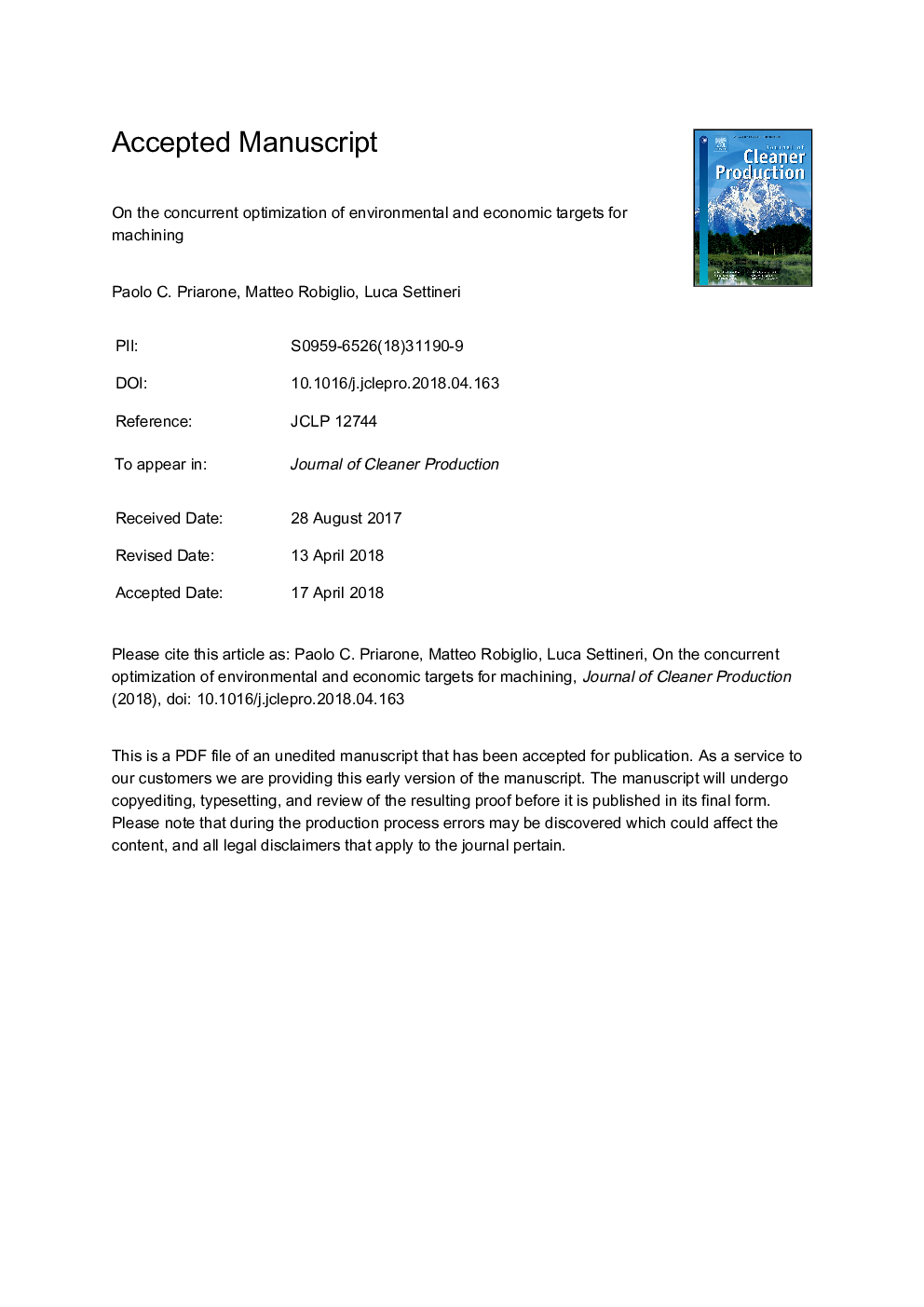| Article ID | Journal | Published Year | Pages | File Type |
|---|---|---|---|---|
| 8095009 | Journal of Cleaner Production | 2018 | 28 Pages |
Abstract
The material processing industry has to deal with material and energy reduction targets, and such a need becomes more and more urgent when future energy and resource consumption predictions are considered. The optimization of machining operations has conventionally been performed by identifying the range of process parameters that lead to the maximum efficiency, which are generally defined on the basis of maximum productivity and minimum cost criteria. Cost-based models are part of the industrial cultural background, while the emerging environmental impact analysis has not yet become fully established. The paper describes an approach that is aimed at the integration of system-level models for the environmental and economic assessment of machining. Process time, cost, energy demand and carbon dioxide emissions are assumed as optimization targets. The dry and wet turning of Ti-48Al-2Cr-2Nb and Ti-6Al-4V alloys, while varying the process parameters, is considered as a case study. The results highlight that the range of process parameters that allow the maximum process efficiency to be achieved is influenced by material machinability, and that a holistic approach to process optimization appears to be a key task which is worth further research efforts.
Related Topics
Physical Sciences and Engineering
Energy
Renewable Energy, Sustainability and the Environment
Authors
Paolo C. Priarone, Matteo Robiglio, Luca Settineri,
